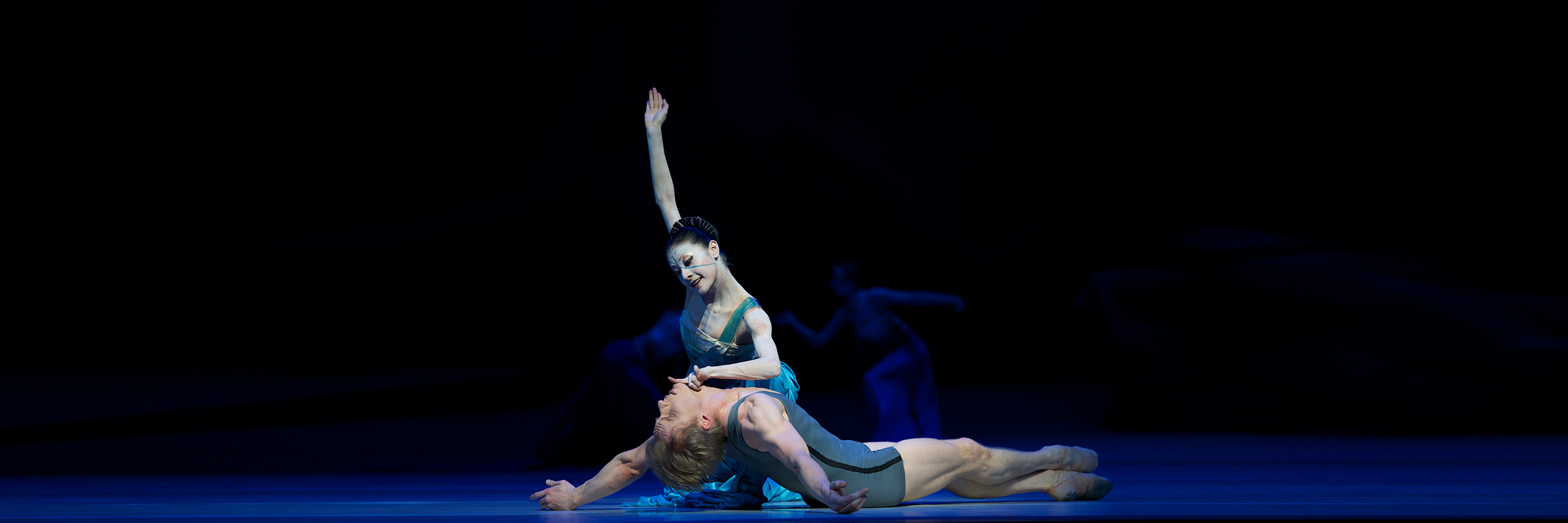Your Ultimate Guide to The Little Mermaid
High drama. Intense theatricality. Heartrending romance.
What Is It? Watching John Neumeier’s The Little Mermaid is like stepping into another world, or an alternate dimension. Inspired by Hans Christian Andersen’s fable about a mermaid willing to sacrifice everything for the man she loves, this ballet is a modern take on this classic tale. Created by the same mind as last season’s Nijinsky, this ballet is dramatic, visually stunning, and ultimately heartbreaking.
In short: High drama. Intense theatricality. Magical sets. Heartrending romance.
Who’s It For? Anyone who loves operatic tragedies, dark fairy tales, and psychologically intense choreography.
What Will I See? This isn’t the animated film version, but instead a sophisticated take on Anderson’s fable with a little twist: Neumeier adds a biographical gloss to the story, adding in a Poet, based loosely on Andersen himself…
PROLOGUE
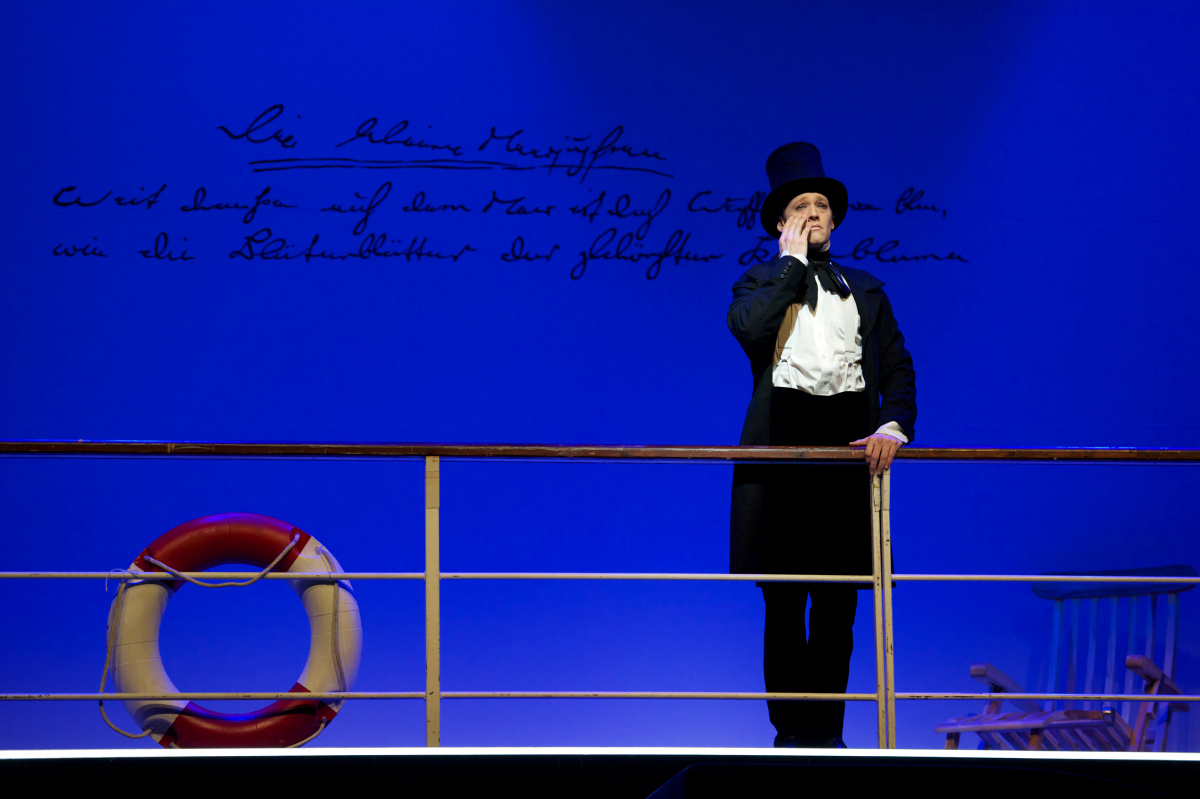
The Plot: The ballet opens on a boat, where we see the Poet thinking about his best friend Edvard. The Poet clearly thinks of Edvard as more than just a friend and is in despair over his wedding to Henriette. A tear rolls down his cheek and he follows that tear as it falls into the ocean.
What Should I Look For? This prologue serves as a framing narrative for the rest of the ballet and introduces us to the Poet and Edvard. Notice how the Poet’s movements seem slower and more deliberate than those of Edvard and the wedding party, and how both groups have different stylized movements that convey their thoughts and emotions.
PART I
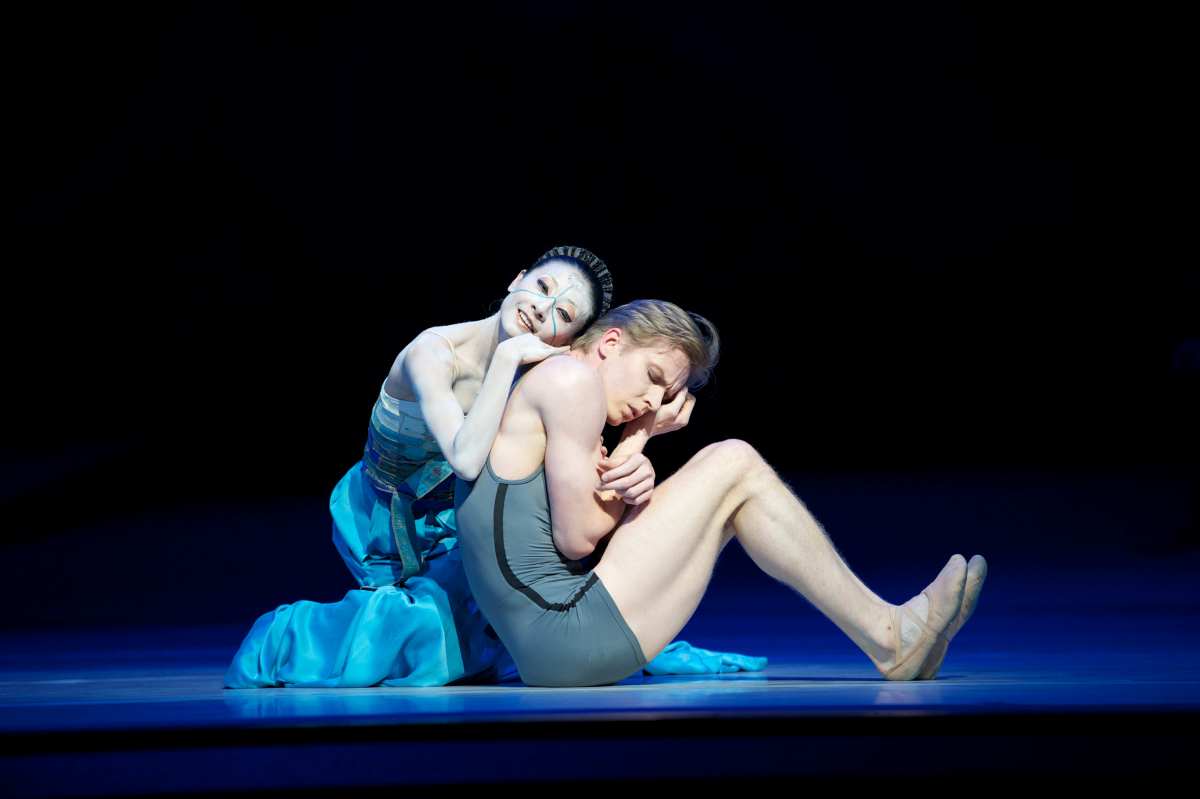
The Plot: We meet the Poet at the bottom of the sea, where his desire for Edvard takes shape as a mermaid who dreams of visiting the human world. A ship passes by and its captain is a Prince who bears a startling resemblance to Edvard (see where this is going?). He dives into the sea to retrieve a golf ball, but a storm created by the evil Sea Witch causes him to nearly drown. The Mermaid rescues him, bringing him to shore, and falls in love.
But upon awakening on the beach, the Prince sees not the Mermaid, but a Princess with (surprise!) a resemblance to Henriette. As the Mermaid watches in despair, the Prince falls for the Princess.
The Mermaid—like the Poet—isn’t going to take this lying down. She seeks out the Sea Witch for help. The Sea Witch agrees—but at a cost. A violent ritual results in the Mermaid gaining legs, but even a single step on land causes extreme pain.
This time, the Prince finds the Mermaid washed up on the shore and takes her onboard his ship. However, instead of happily ever after, she now has a front row seat to watch his developing relationship with the Princess.
What Should I Look For? Notice how people on land—both the Mermaid, once she’s transformed, and the humans—move differently than the creatures under the sea. That effect is created both choreographically and through production elements. One major complication for the choreographer in creating this ballet was how to make dancers look like they had fins, not legs. He settled on long pants that seem to flow as if in water. Notice how these costumes act almost like props and change the way the dancers move.
PART II
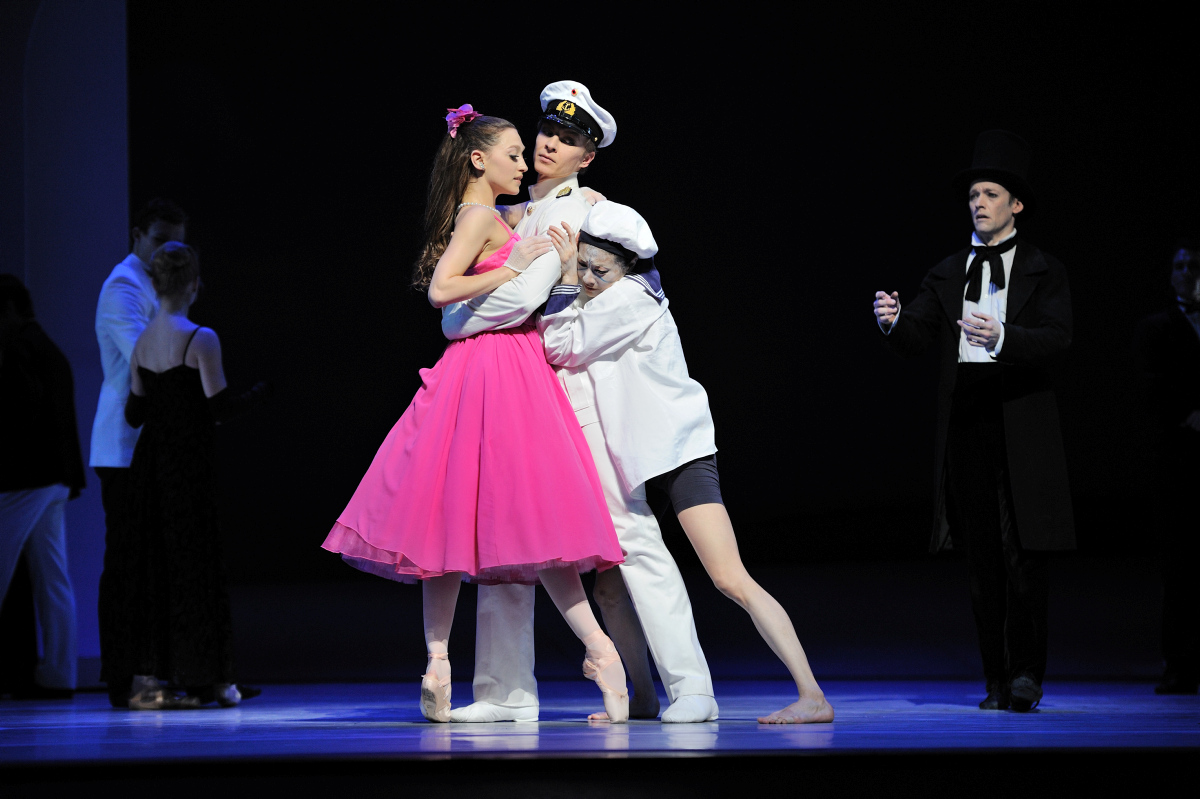
The Plot: Most of this act shows the Mermaid’s torment. Unable to be with the Prince, who’s now engaged to the Princess, and trapped by the rooms and walls of the human world, she becomes desperate. So the Sea Witch offers a solution: he says if she kills the Prince, she’ll get her tail back and be able to go home. But the Mermaid can’t do it. She really does love him. So she leaves without harming him.
What Should I Look for? This act is all about the Mermaid’s psychology. Note how the sets seem to close in on her, in contrast to the open expanse of the ocean. Look for the way her movement conveys pain and agony. And watch for her interactions with both the Prince and the Poet—what do they tell us about her? And about these two men?
EPILOGUE
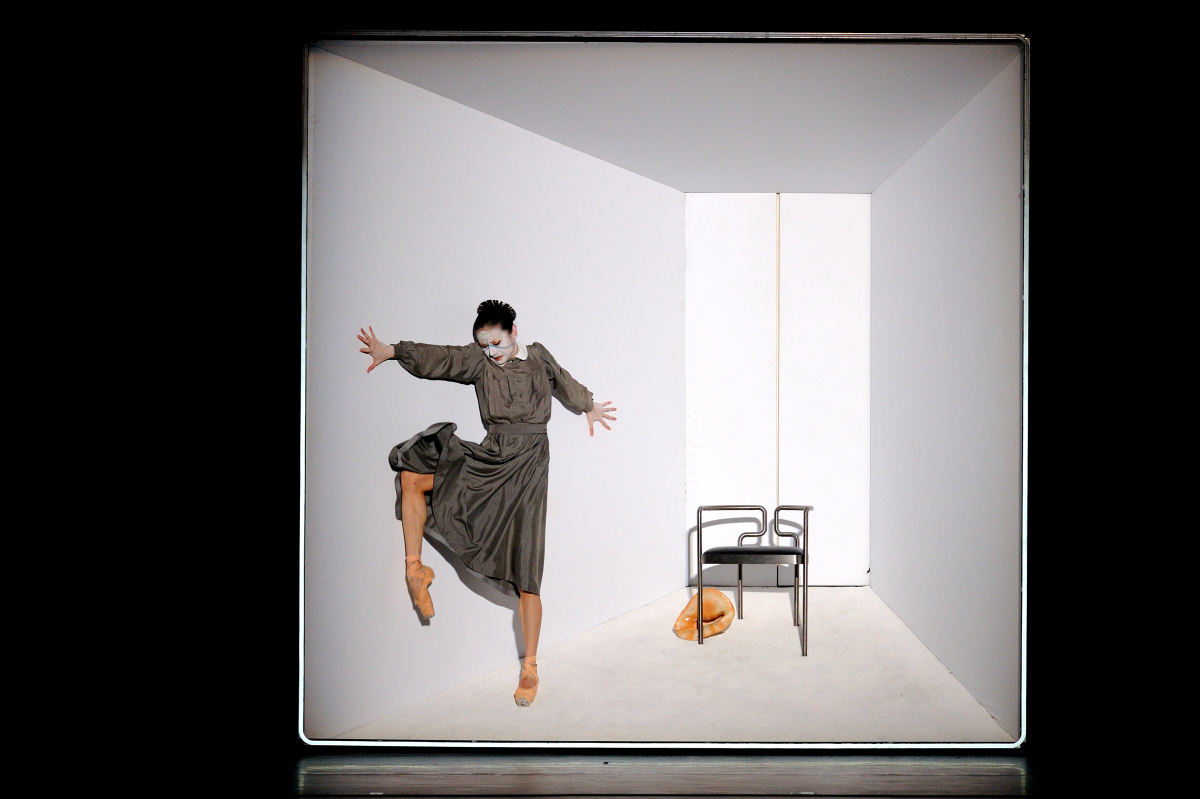
The Plot: Now both the Mermaid and the Poet are alone, rejected by Edvard/the Prince but unable to go back to life before this intense love. And yet, they come together, bound by their loss, creator and creation. The Poet’s love gives the Mermaid a soul, making her immortal; the Mermaid’s story will make the Poet immortal. They leave together.
What Should I Look For? Look for how perfectly matched the Poet and the Mermaid’s movements are. They’ve danced together earlier in the ballet, but not with this kind of uniformity, almost as if one is the shadow of the other. After all of the angst and torture of the earlier scenes, how does this ending, in which these two depend on each other, create a new sense of hope?
Header image: Yuan Yuan Tan and Tiit Helimets in Neumeier’s The Little Mermaid // © Erik Tomasson



